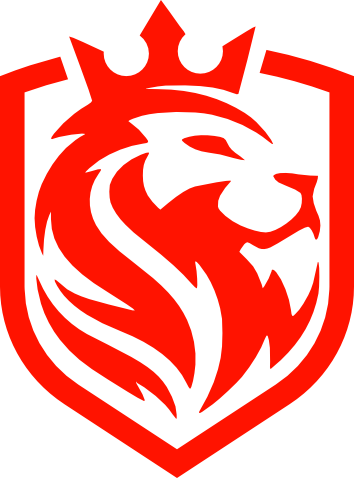Keep calm and carry on!
Today’s lesson:
Greetings and Introductions
Lesson Title
Basic Etiquette for Greetings and Self-introduction
Duration: 50 minutes
Level: Beginner & A1
Objetivos de Aprendizagem
- Compreender e usar saudações comuns em inglês.
- Aprender a etiqueta básica para cumprimentar diferentes indivíduos.
- Apresentar-se eficazmente em inglês.
Overview
In English, greetings differ based on the time of day, context, and relationship with the person. Understanding these differences ensures effective and appropriate communication.
Em inglês, as saudações diferem com base na hora do dia, no contexto e na relação com a pessoa. Compreender essas diferenças garante uma comunicação eficaz e adequada.
Atividades
Aquecimento 15 minutos
Atividade Principal 20 minutos
Verificando o Entendimento 15 minutos
Tarefa Seminal 5 minutos
Warm up
Listen and repeat with me
Here are three simple phrases to greet someone and introduce yourself.
- Hello, I’m (Say Your Name). Nice to meet you.
- Good day! My name’s (Say Your Name). How are you?
- Hi there! I’m (Say Your Name). What’s your name?
Questions about meeting people
Here are three simple questions you can ask someone, match the English question with the Portuguese below.
What’s your name?
How long have you been working here?
Which department are you in?
- Como se chama?
_ _ _ - Há quanto tempo você trabalha aqui?
_ _ _ - Em que departamento você está?
_ _ _
Main Task
Listen and repeat with me
In the English language, there’s more to greeting someone than just a basic ‘Hello’. Here are some simple phrases and tips to greet someone and introduce yourself. Let’s discover greetings for professional situations, casual conversations.
Na língua inglesa, há mais maneiras de cumprimentar alguém do que apenas um simples ‘Hello’. Aqui estão algumas frases simples e dicas para cumprimentar alguém e se apresentar. Vamos descobrir saudações para situações profissionais e conversas informais.
Formal Ways To Say “Hello”
Estas são frases clássicas e formais para usar ao cumprimentar alguém, seja na primeira vez que as encontra ou se já as conheceu anteriormente
Good morning. Good afternoon and Good evening.
- Hello, John ➜ Good morning John.
- Hello, John ➜ Good afternoon John.
- Hello, John ➜ Good evening John.
Pleased to meet you.
Esta frase e só funciona quando você está conhecendo alguém pela primeira vez.
- Hello, I am John ➜ Pleased to meet you, I am John.
- Hello, I am Anna ➜ Pleased to meet you, I am Tony.
It’s nice to meet you.
Esta frase e só funciona quando você está conhecendo alguém pela primeira vez. Veja “I am” agora é “I’m“.
- Hello, I am John ➜ It’s nice to meet you, I’m John.
- Hello, I am Anna ➜ It’s nice to meet you, I’m Tony.
How are you?
Esta forma de dizer “Hello” é muito popular. Mesmo que as pessoas perguntem, elas geralmente esperam uma resposta curta como “I’m fine”, mesmo que não seja verdade.
- Hello, Maria ➜ How are you, Maria?
- Hello, Paul ➜ How are you, Paul?
Informal Ways To Say “Hello”
What’s up?
“What’s up?” é o equivalente informal de “How are you?”, no sentido de que as pessoas geralmente não esperam uma resposta longa quando usado como cumprimento.
- Hello, John, I’m Paul ➜ Hi What’s up John? I’m Paul.
What’s new?
“What’s new?” funciona melhor com pessoas que você já conhece.
- Hello, John ➜ What’s new John?
Agora é a sua vez de praticar!
Perguntas de múltipla escolha sobre qual saudação usar em diferentes cenários.
Answer the following questions
Which greeting would you typically use at the start of the day?
a) Good afternoon. b) Good evening. c) Good morning.
If you meet someone for the first time, what would you say?
a) What’s new? b) Pleased to meet you. c) What’s up?
You meet a colleague around 6 PM.
Which greeting is most appropriate?
a) Good morning. b) Good evening. c) Good afternoon.
Which of the following phrases indicates a person is curious about recent happenings or updates in your life?
a) What’s new? b) It’s nice to meet you. c) Pleased to meet you.
If it’s 2 PM, and you’re greeting a friend, what would you say?
a) Good morning. b) Good evening. c) Good afternoon.
“It’s nice to meet you.” is said:
a) When you haven’t seen someone for a long time.
b) At the start of the day.
c) When you’re introduced to someone new.
Which is an informal way of asking someone about their well-being?
a) What’s up? b) Pleased to meet you. c) Good evening.
If it’s early in the night, which greeting is most fitting?
a) Good morning b) Good evening c) Good afternoon
Which of the following statements is an inquiry about a person’s health or feelings?
a) How are you? b) Good morning! c) It’s nice to meet you.
You’re introduced to a friend’s friend at a party.
Which of the following greetings could you use?
a) What’s up? b) Pleased to meet you. c) Both a and b.
- c) Good morning
- b) Pleased to meet you.
- b) Good evening
- a) What’s new?
- c) Good afternoon
- c) When you’re introduced to someone new
- a) What’s up?
- b) Good evening
- a) How are you?
- c) Both a and b
Weekly Task
What you need to do
Observar e anotar várias saudações que ouvem em filmes, séries ou músicas em inglês. Deve identificar o contexto em que cada saudação é usada e compartilhar suas descobertas na próxima aula.
For example
- Enquanto assistia a um filme, ouvi o personagem dizer “What’s up?” quando encontrou um amigo na rua.
- Em uma série de TV, quando um funcionário entrou no escritório, ele disse “Good morning, boss!”
- Ouvi a frase “Pleased to meet you” em uma canção.
Imagem de tirachardz no Freepik








